Overview
If you are looking for thrilling, unspoiled mountainous terrain to trek in, the Rolwaling Valley trek is your game. Rolwaling Valley is sandwiched between two glaciers and few have made it to this surreal, fascinating region surrounded by myths of the Yeti (said to be its home) and by peaks on all three corners. In fact, from the very start of the trek, one is captivated by the landscape, which takes away the fatigue of the arduous hike ahead.
The hair-raising trails above fast flowing, turbulent rivers and banks,and impassable passes, which through the passing of time, have made it a place of venture for a few, have managed to keep this part of the Himalaya region away from the onslaught of adventure-seekers. But for those who do, the reward is a plethora of Himalayan highland lakes, roaring waterfalls, serene snow-capped peaks, hanging glaciers, moraines, and dense alpine forests.
The hike is mostly along the Rolwaling River from the valley it gets its name from, littered with unspoiled floral beauty and fauna parts of nature. The culture in this area has also undergone the same evolution as that of its natural counterpart.
Itinerary
You will be met at Tribhuwan International Airport by a representative of Green Lotus Trekking holding a welcome placard and token for your overnight stay at a hotel in Kathmandu and to freshen up. Prior to dinner, a briefing will be held. You could spend the rest of the day resting or wandering around the city of Kathmandu, sightseeing.
Our bus drive takes you towards Lhasa, where we leave the highway at Lamosangu and head towards Dolakha and move past it to Shigati. We rest at a lodge for the day and night.
In the first leg of the trek, we hike to Suri Doban, from where we continue along a river trail and then onto flat land, crossing a few streams and forests with varieties of orchids, rhododendron, and other flora. Finally, across a suspension bridge, we get to Jagat, a town of varying ethnicity.
Initially following a well-trodden path, the trail ascends and descends through a forest and then follows a river. The valley gets narrower and, after crossing a suspension bridge, a steep climb takes us to the village of Simigaon, perched on the terraced mountain.
Passing a few Sherpa hamlets, getting the magnificent view of Mount Gaurishankar is wonderful. From the ridge at the top, we trek towards the Rolwaling valley, where the trail becomes rockier and the beautiful pine forest becomes more apparent. Descending the river Rolwaling, we get to the camping site.
Taking an uphill trail through a variety of plants and rhododendron forests, we continue the trek via the Rolwaling stream deeper into the valley till the confluence of the river Gaurishankar. Ascending up and over a relatively flat trail, we get to Beding.
We rest at Beding today to acclimate to the high altitude, with side trips to Lha Dengka (4030m).
The day’s trek begins with a relatively easy walk along the northern bank of the Rolwaling River. Passing the summer hamlet of Beding, peaks of more than 6000m begin to appear on the eastern horizon. Passing the believably meditation place of Guru Padma Sambhava, we reach the summer hamlet of Na, apparently with the touch of high mountain potato fields.
The day’s trek begins along the southern bank of the river, following a shallow stream where we cross at Sangma and up moraines to reach its terminal, where we camp for the night in Kabuk. Tsoboje (6,689m) and Dragker-Go (6,793m) are visible from the camp.
Hiking the northern side of the moraine, and continuing further along its right side with frequent overhanging rocks, we trek above the glacier on the rocky surface of it. Below will be the Dromlambau glacier. Further around this section, there is the danger of rock falls. Getting to the middle of the glacier is the safest. Walking further for an hour or so, we get to Noisy Camp, a misnomer in name as no drunken brawls happen here, but from the constant noise through the night of breaking ice and falling rocks reaching the camp site.
Hiking further from the noisy camp further up the moraine, traversing both sides and hop-skipping exposed rocks for a couple of hours, we get to Tesi Lapcha Camp. We camp here for the night.
Hiking further up the moraine up east, we get to the vintage of the summit of the Island Peak of Parchamo or continue onto Ngole. This Parchamo High Camp gives a 360-degree view of the Rolwaling valley to the west and the entrance to the Khumbu region to the east. We set camp for the night.
There will be a day of rest with trail attempts to the summit of Parchamo, the island peak, and to get used to the high altitude we are at.
Today we try to conquer the island peak of Parchamo, which gives us an astonishing view of the ranges that surround the Rolwaling Valley and the Khumbu region as well. We return to Parchamo High Camp to rest.
Hiking further down the moraine after the vintage point to the eastern side of it and over more exposed rocks and ice, we get to Ngole, where we camp for the night. We have now come to the eastern side of the Rolwaling Valley into the Khumbu region.
Trekking further east along a well defined trail, we are well in the Khumbu region and we continue descending to the Thame Stream and, on reaching it to Thegpo, we get magnificent views of Mounts Ama Dablam, Makalu and Lumding Himal. Passing through shepherd huts and pastoral lands, we finally get to Thame, where we lodge for the night.
We trek to the affluent town of the Khumbu region, Namche Bazaar. Heading further east downhill for a short while, we cross the Bhote Koshi River and, after twenty minutes or so, we gradually begin ascending uphill, passing a number of villages, mani walls, and prayers inscribed on fluttering flags and on boulders. We get to Khunde and Khumjung, from where Namche comes into view. After a 45-minute hike downhill, we hit the town. O/N stay in the lodge.
An hour’s trek gets us to the confluence of the Bhote Khosi and Imatjse Rivers to make way for the Dudh Koshi, which we follow most of the way till Pakding in the backdrop of the highest mountain in the world, Everest. Walking leisurely through lush green scenery, we reach Cheplung and finally Lukla. O/N stay at the lodge.
A forty-five minute hike to the airport in Lukla gets us there in time to catch our early morning flight to Kathmandu. In the air, you would catch a panoramic view of many Himalayan mountain peaks above 8000m and Mount Everest, the highest in the world. You get to freshen up at the hotel and then choose to either rest for the remaining part of the day or go sightseeing and buy souvenirs.
The trip concludes – our airport representative will drop you to Kathmandu’s Tribhuwan International Airport for your flight departure from Nepal.
US $2240 Per Person
Cost Includes
- Airport transfers
- Full camping support (meals, tent etc)
- Local English speaking guide, porter(s)
- Sleeping bag & down jacket
- Lukla - Kathmandu airfare ($116)
- All trekking related fees
- Climbing Permit
- Group Climbing Equipment
- Climbing Sherpas
Cost Excludes
- International Airfare
- All of Kathmandu lodging and fooding
- Insurance
- Nepal visa ($30)
- Departure tax ($28)
- Personal Climbing Gear
- Boots, Harness, Helmet .etc
You can find good places to trek somewhere in the Himalayas at anytime of the year. However, for most regions, the best time is from October to May, with October to November having the best weather for trekking. During the autumn, nights are cold in the high Himalaya, but the bright sun makes for a pleasant daytime temperature (20 degrees centigrade to 5 degrees centigrade in the night). Above 3500m, the temperature range goes down to -10 degrees centigrade, and in winter (Dec-Jan), it is about 10 degrees colder.
While you do not need to be super-fit, you need to be fit enough to comfortably walk for 5–6 hours per day in the mountains on reasonable trails. Most of our customers have an interest in walking in the hills or countryside of their homeland and are used to similar daily trips.
We pride ourselves on our small group approach to adventure travel. Small groups allow you to share great company without crowding your experience. Our typical groups range in size from 2 up to 8. One of the attractions of such a trip is the chance to meet people with different backgrounds and personalities.
If this is the case, we can organize a personalized trek for you. Additionally, if you want to spend more time in Kathmandu before or after a trek, we can organize the hotels and quote you a price.
If you are a group of two or more, the trip is guaranteed to run.
Usually, our clients simply bring their existing clothing and equipment and, if necessary, supplement this with some extra items purchased cheaply in Kathmandu.
What gear to bring?
- Passport (with photocopies)
- Photos for Nepal visa on arrival:
- Travel insurance (with photocopies)
- flight tickets (photocopies)
- Daypack for daily personal items
For Trekking:
- Walking boots
- Light sandals or plimsolls to wear in the lodges
- 2 pairs of underwear.
- 2 pairs of walking socks.
- 2 thick fleece or warm shirts
- 1 pair thin thermal underwear
- Long trousers for walking (or a long skirt for women)
- T-shirt
- Shorts
- Gloves (it’s cold on the Thorung La, Laurebina Pass and Cho La)
- A warm hat which covers your ears (for the Kali Gandaki and Thorung La – it’s windy)
- Base ball caps or broad brim hats to keep the sun off (Australian Barmah recommended)
- Sunglasses (vital)
- Sun cream
- Soap dish and soap
- small towel
- Toothbrush and toothpaste.
- Wet wipes or moist towelettes
- Hand sanitizing lotion
- Head torch
- Moisturizer, Lip balm
- Tampons are hard to buy in rural areas.
- Ear plugs for light sleepers
- Toiletries
- Sheet of plastic (use as a poncho if it rains)
- 1 toilet paper rollYou can buy more on the way.
- 2 large plastic bags. One for smelly clothes, one for things that must be kept dry.
- A small, good quality padlock
- Water bottle
- Iodine tablets for water purification
- Protein bars, chocolate, dried fruits, candies, and snack foods.
Notes: All of the trekking items are available in Kathmandu at nominal prices. However, we suggest you bring hiking boots from your home country if you decide to purchase these items in Kathmandu .
Yes, all hotels provide storage facilities for free.
Personal travel insurance is not included in the tour price. It is a condition of booking a tour with Green Lotus Trekking, and your responsibility to ensure the type of tour you are undertaking; the policy must include satisfactory cover for repatriation, high altitudes, trekking and climbing, and helicopter rescue. Please forward your insurance details (e.g. policy number, 24-hour emergency telephone number, and name of insurance company) to Green Lotus Trekking when available.
Yes. You can apply in your home country through the Nepalese Embassy or Consulate or obtain it at the airport on arrival by paying a fee as below:
Multiple entries for 15 days: $25 USD
Multiple entries for 30 days: $40 USD
Multiple entries within 90 days: US $100
Notes: We suggest you bring the exact change. You also need to bring two passport-size photos.
Tourist Visa Extension
The visa extension fee for 15 days or less is US $ 30 or equivalent convertible currency, and the visa extension fee for more than 15 days is US$ 2 per day.
A tourist visa can be extended for a maximum period of 150 days in a single visa year (January – December).
Gratis (Free) Visa
A gratis visa for 30 days is available only for tourists from SAARC countries.
Indian nationals do not require a visa to enter Nepal.
Normally single trekkers have no problems fitting in with a group. Normally single trekkers share rooms or lodges with other trekkers of the same sex, but if we have an odd-number we ensure that a room or lodge is organised accordingly.
To confirm your booking, we will require a deposit of $250 for treks and $300 for peak climbing, which can be made by bank transfer or online through paypal.com (the leading transaction site). The balance is payable on arrival in Kathmandu with cash or traveler’s cheque. Alternatively, the balance can be paid by bank transfer or PayPal shortly before arriving in Kathmandu.
The following details are needed to process your trekking permit, national park permit, flight booking etc.
- Gender:
- First Name:
- Last Name:
- Passport number:
- Expiry date:
- Issue location:
- Nationality:
- Year of birth:
- Occupation:
- Your arrival details (time, date, flight number, airline):
All the above info can be sent electronically via email.
You will typically walk 4–9 miles (5-8 hours) each day. Some days may be rest days for impromptu exploration. In high and steep areas, you may move more slowly. Most people begin to feel the effects of high altitude over about 2000 meters, and your trekking pace is always adjusted to permit safe acclimatization. Our treks follow established trails used by local people. You will probably carry only a light daypack.
You can hike at your own pace, stopping when you wish. There is ample time to cover the necessary hiking distance each day with lots of stops. If you are on a private trek, you may wish to take more or fewer days to cover a given distance, or add in rest days. If you like to hike fast, your guide will be concerned that you acclimatize to high altitude effectively. You may wish to reach camp at a measured pace, but take a side hike after arriving at camp. Your guide is always interested in learning about your personal interests and accommodating those interests as the trip permits.
Altitude sickness, often known as acute mountain sickness (AMS), is a particularly important medical consideration while trekking in Nepal. Altitude sickness means the effect of altitude on those who ascend too rapidly to elevations above 3000 meters. The initial symptoms of AMS are as follows:
- nausea, vomiting
- Loss of appetite
- Insomnia or sleeplessness
- Persistent headaches
- Dizziness, light headaches, confusion,
- Disorientation, drunken gait
- Weakness, fatigue, lassitude, heavy legs, slight swelling of hands and face.
- Breathlessness and breathing irregularly
- Reduced urine output
These symptoms are to be taken very seriously. In the event of the appearance of any of the above symptoms, any further ascent should be reconsidered; otherwise more serious problems can occur, which can cause death, sometimes within a few hours. The only cure for altitude sickness is to descend to lower elevations immediately. Acclimatization by ascending to no more than 300 to 500 meters per day above 3000 meters and the proper amount of rest are the best methods for prevention of AMS.
Our itineraries are designed so that our clients ascend at a sensible and safe rate. The effects of altitude are felt by everyone, even the Sherpas, but most people find that gentle acclimatization allows them to reach their high point without any problems.
Accommodation: There are a number of lodges along the popular trekking routes in the Annapurna, Everest, and Langtang regions. These lodges are called “Tea House Lodges” and are managed by local people. Private rooms, dormitories, toilets, shower rooms with hot and cold water, and one attached restaurant are among the basic requirements for overnight accommodation at these lodges.The quality of food offered might vary from lodge to lodge, but most serve simple and hygienic meals. The teahouse trek provides you an opportunity to feel the warm hospitality of friendly Nepali hosts. The money you spend goes to the local community.
Camping Trekking
In a typical camping trip, each pair of trekkers will sleep in a spacious mountain tent with a durable rain fly and full insect netting. The tent is fitted with foam mattresses. When your campsite is near villages or lodges, you may be invited to sleep in the lodges or homes of local people.
Breakfast options include oatmeal,French toast,Chapatti, Tibetan bread, eggs, pancakes, muesli, and for lunch or dinner you can have sandwiches, soups, momo (dumplings), macaroni dishes, pizzas, noodles, steak, dal bhat (rice, lentils, veg platter), pasta, etc.
Our trekking guides are carefully selected for their ability and are generally from Sherpa, Tamang, Gurung, Magar, and other communities from remote mountain villages. Each guide is trained in eco-friendly trekking methods and safety measures. They help to maintain your health and your happiness as well as the crew members. Our guides are committed to making sure that all our trekkers have an enjoyable trek, come back safe and are overwhelmed by their experience. Your guide will be a friend and companion, who takes pleasure in showing you his country’s specialties and, perhaps, meeting his home and family too.
The majority of the fees our clients pay go directly into the community where you trek.
Tipping is at your discretion and always appreciated. A good rule of thumb is anywhere from $2–5 dollars per day for the guide and $1.5–3 dollars per day per porter. The total amount can then be divided among the group.
Please have them contact us at any of the following numbers:
+977-98510-32108 or 9841-250248 for cell phone.
977-1-400-50379 (landline) (office hours) 77-1-400-5037 or 444-5475.
We check email frequently throughout the day, so you could also write to our email: info@green-lotus-trekking.com if it’s not urgent.


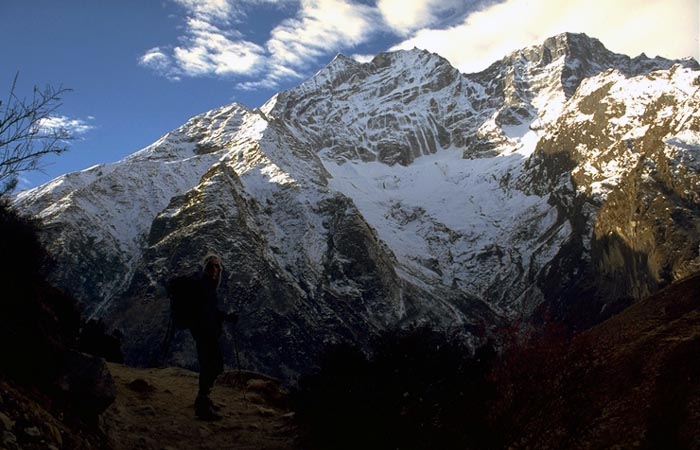
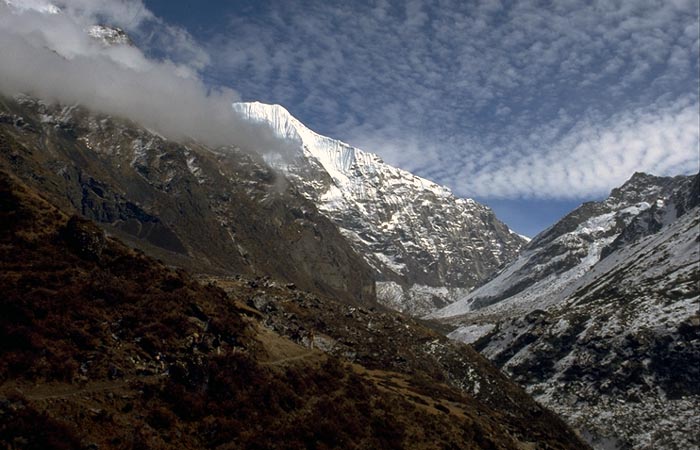
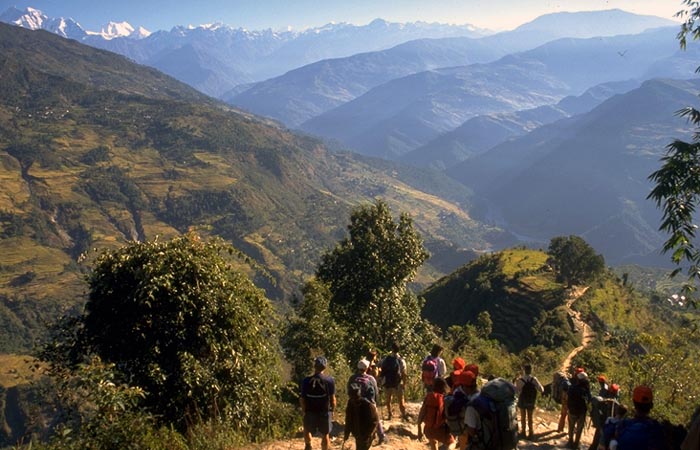
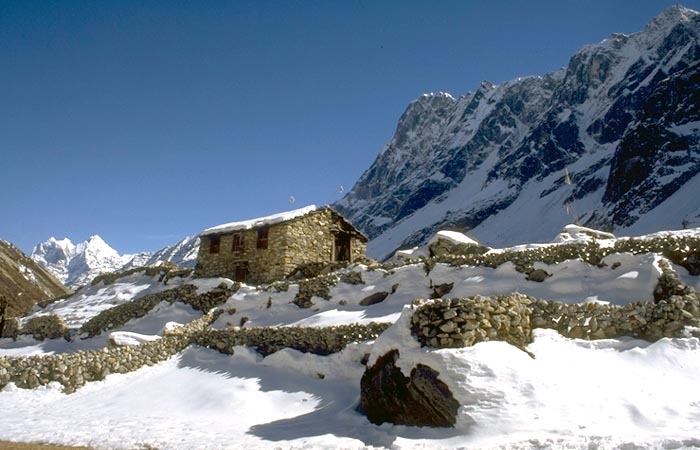
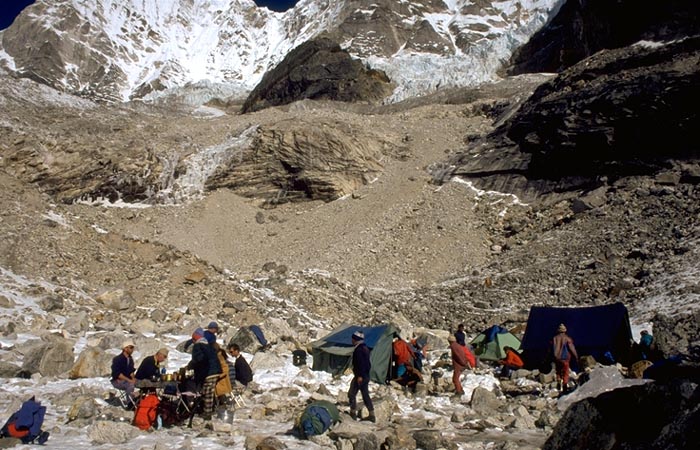
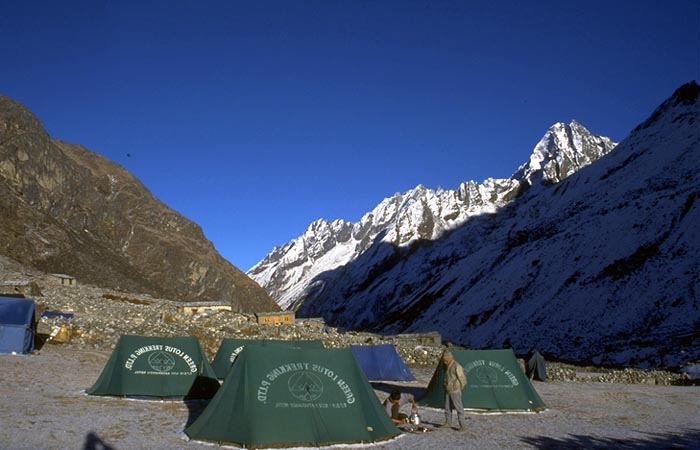
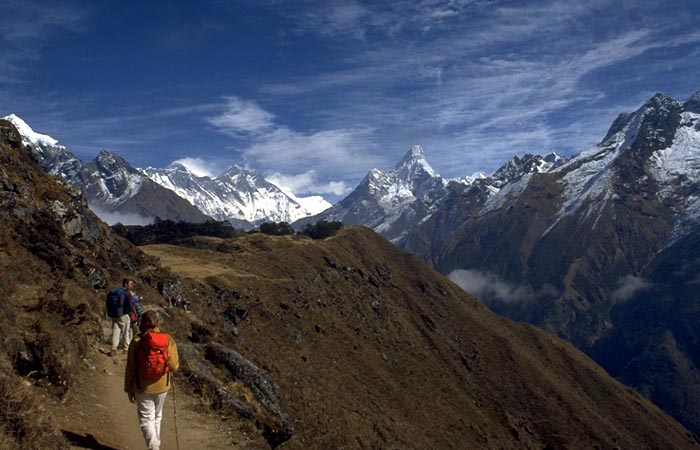
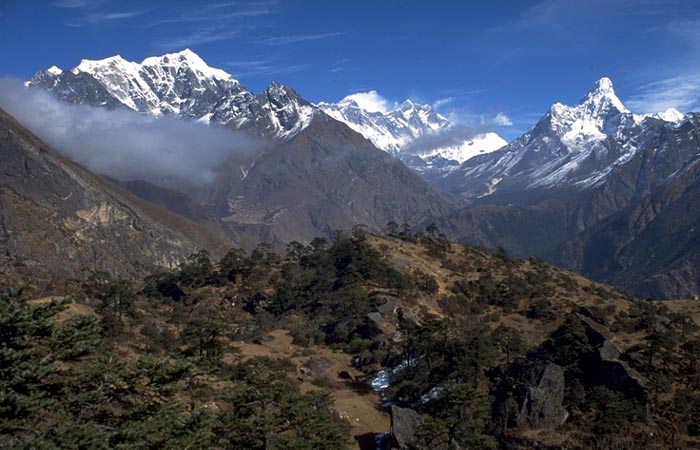
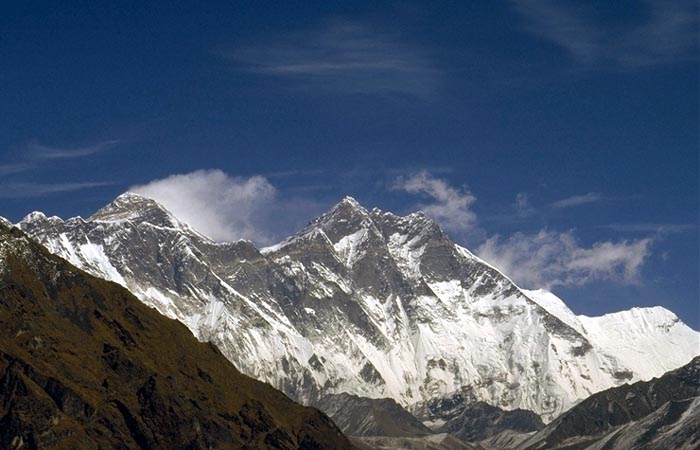
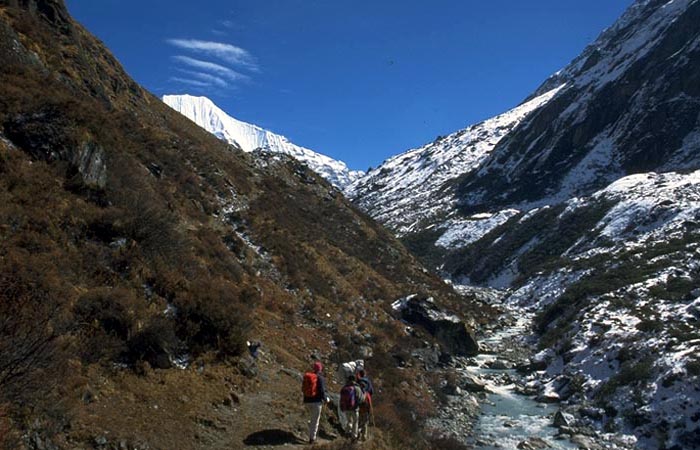
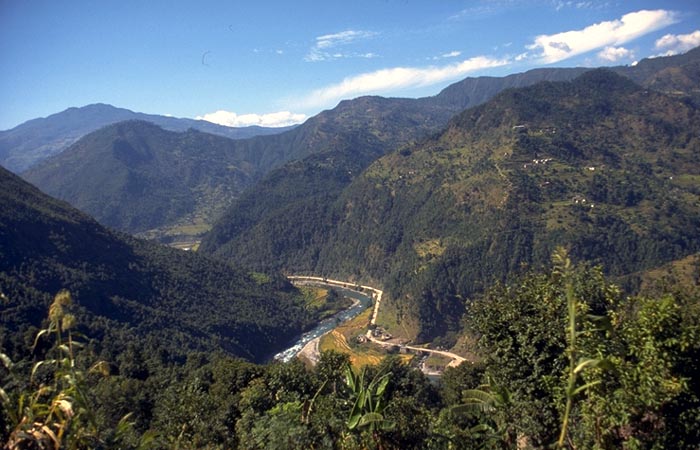
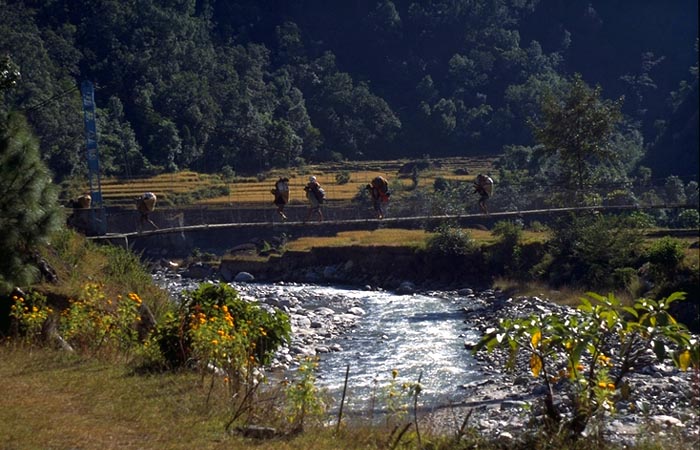

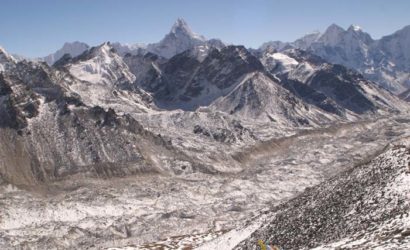

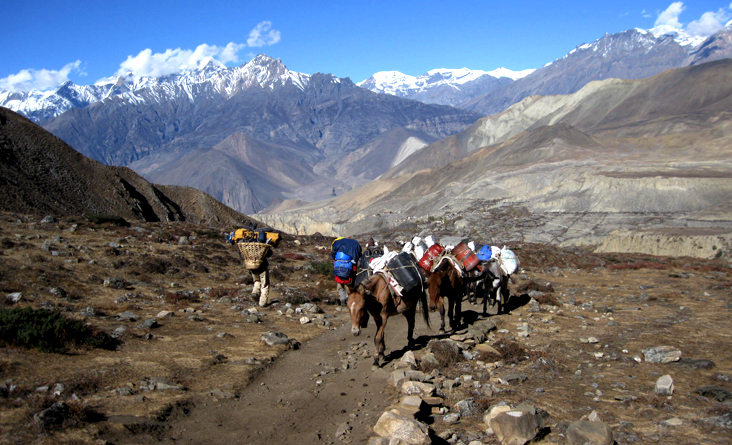
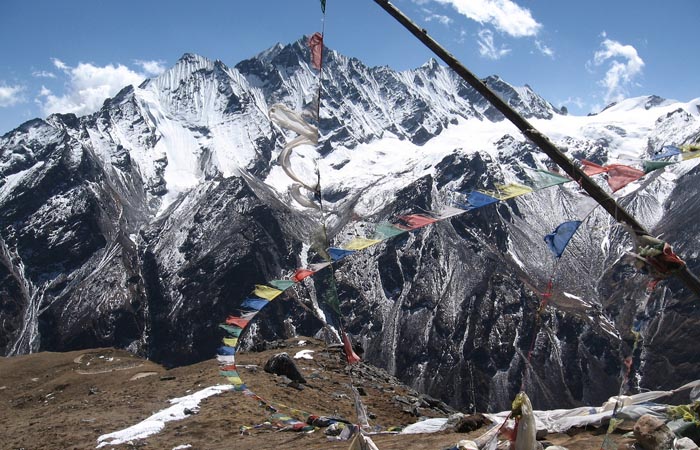
Recent Comments